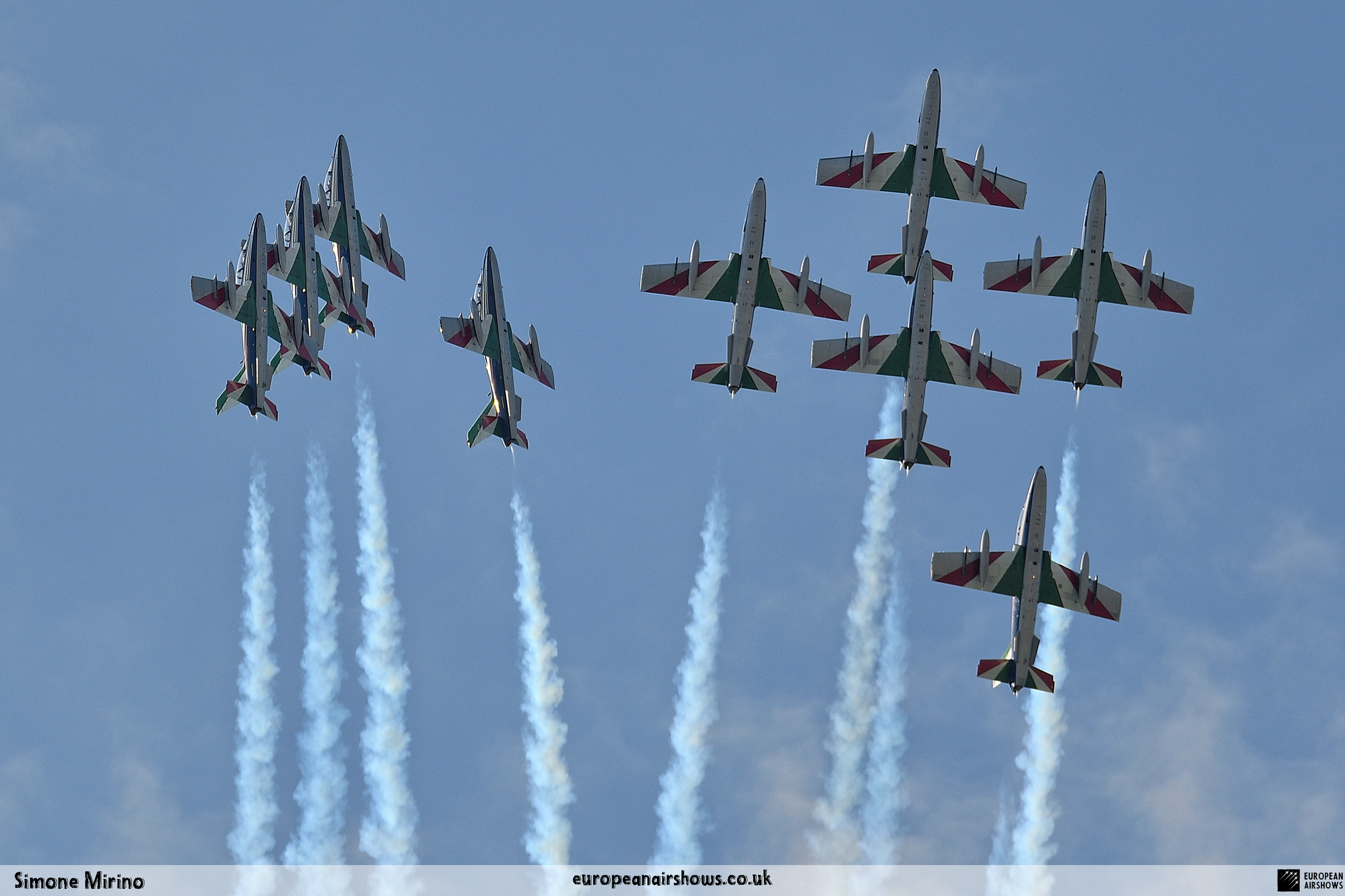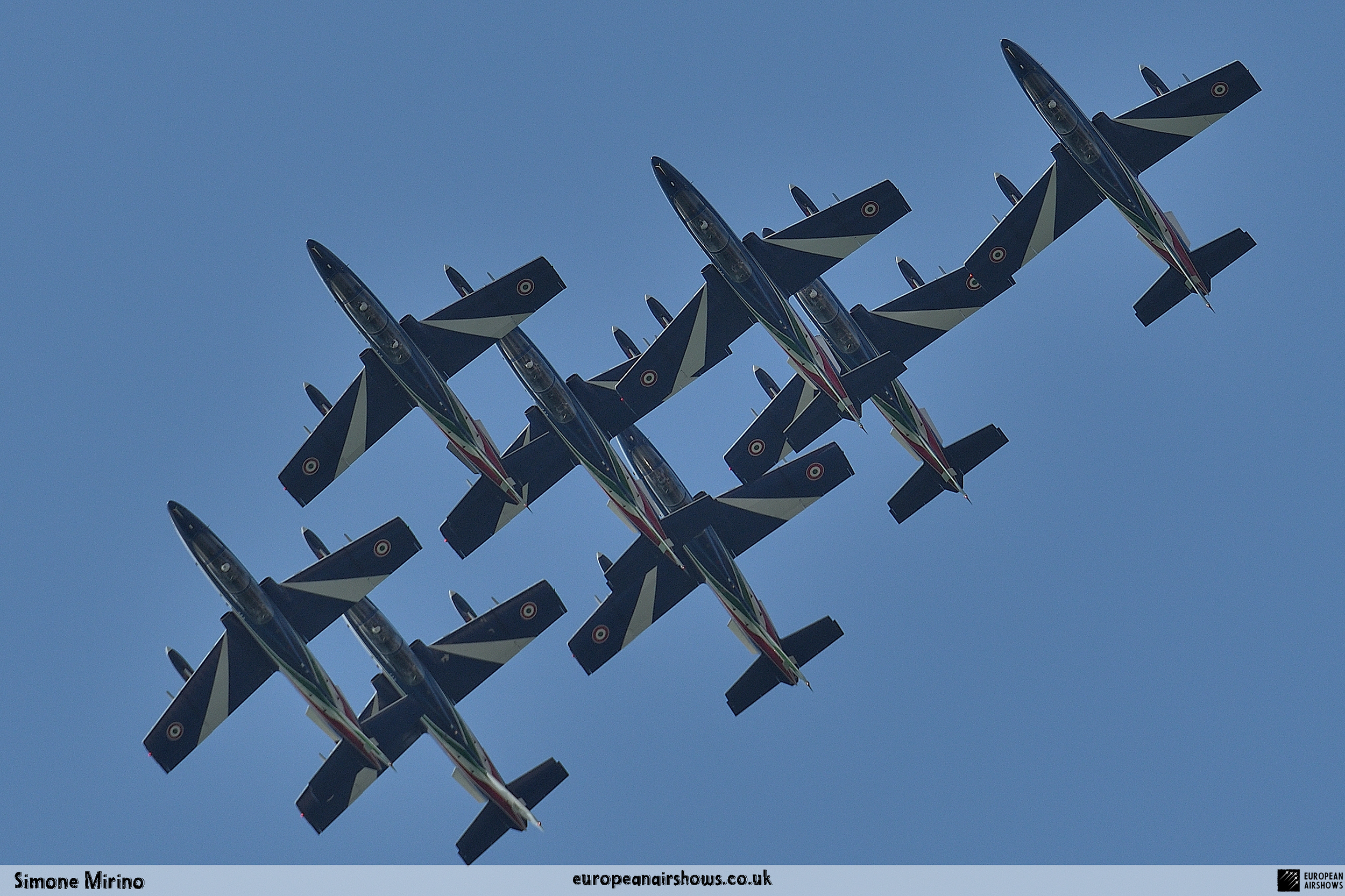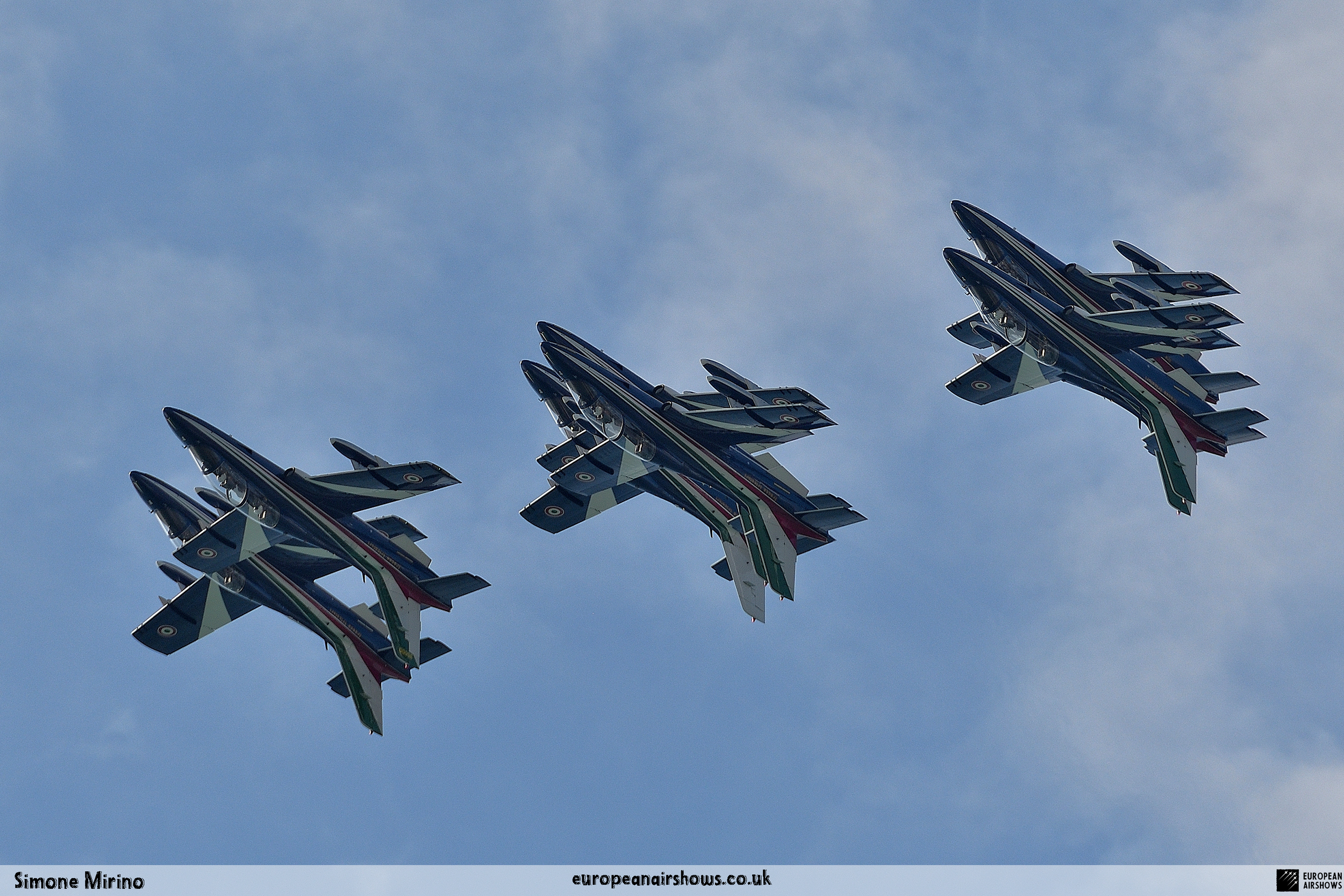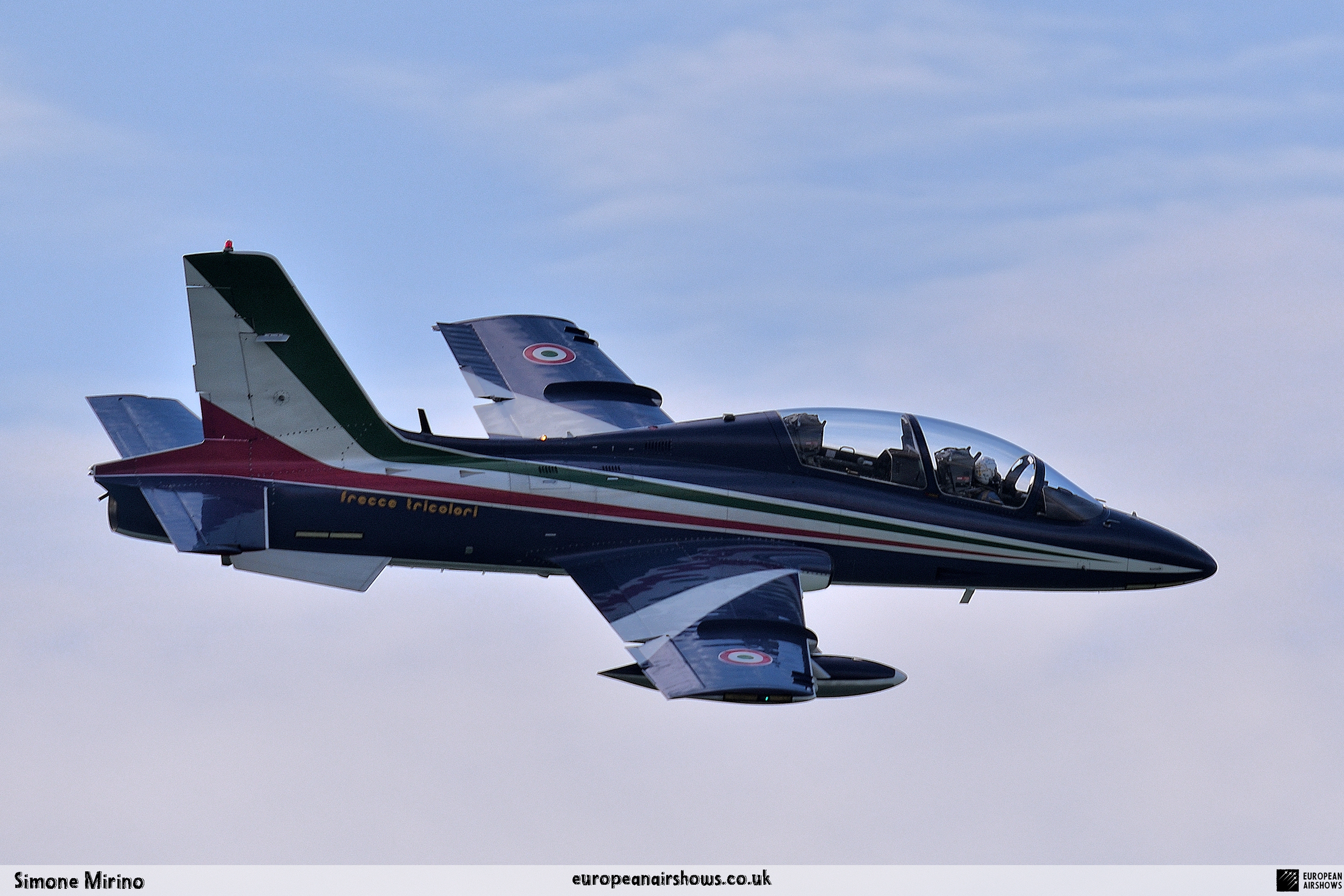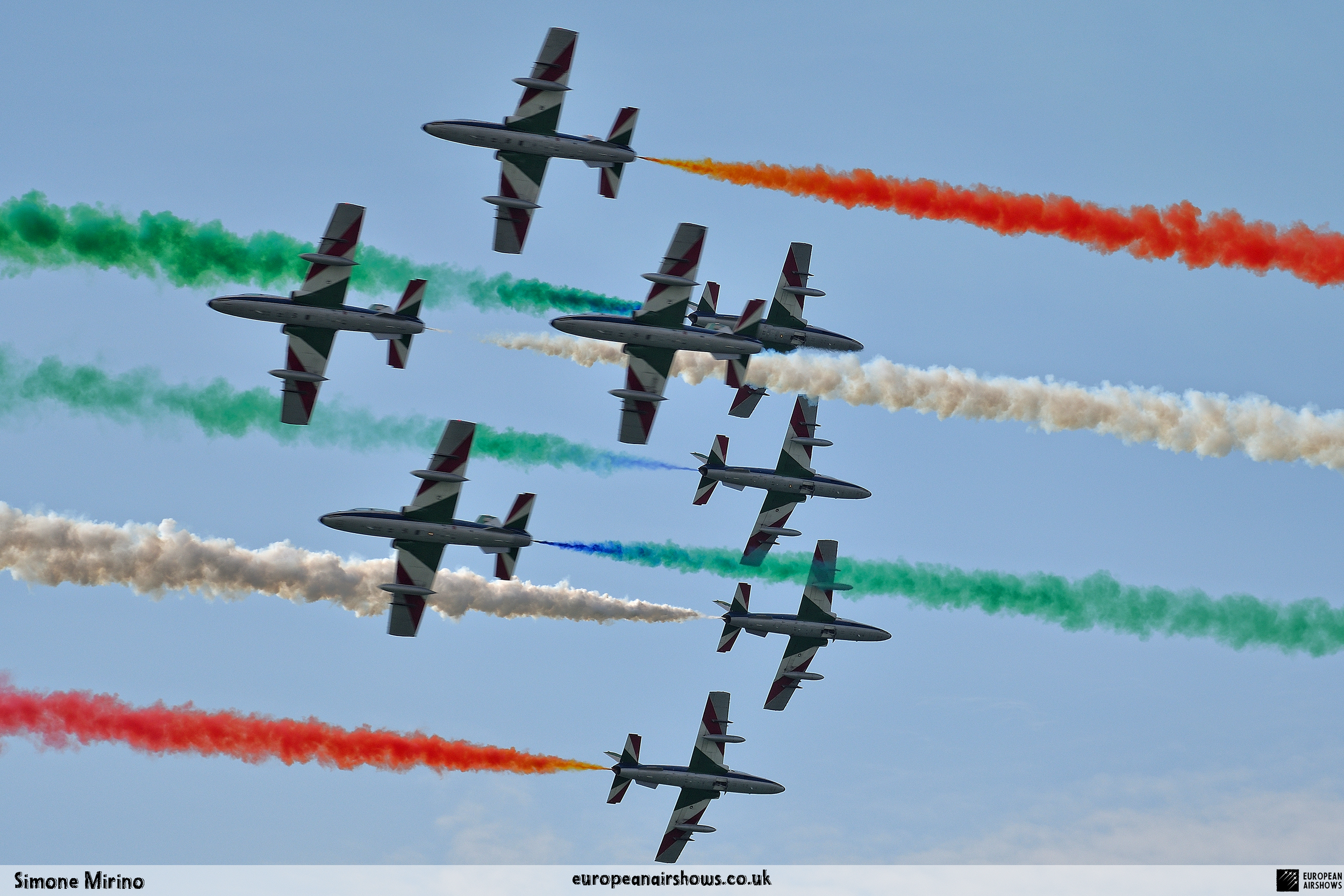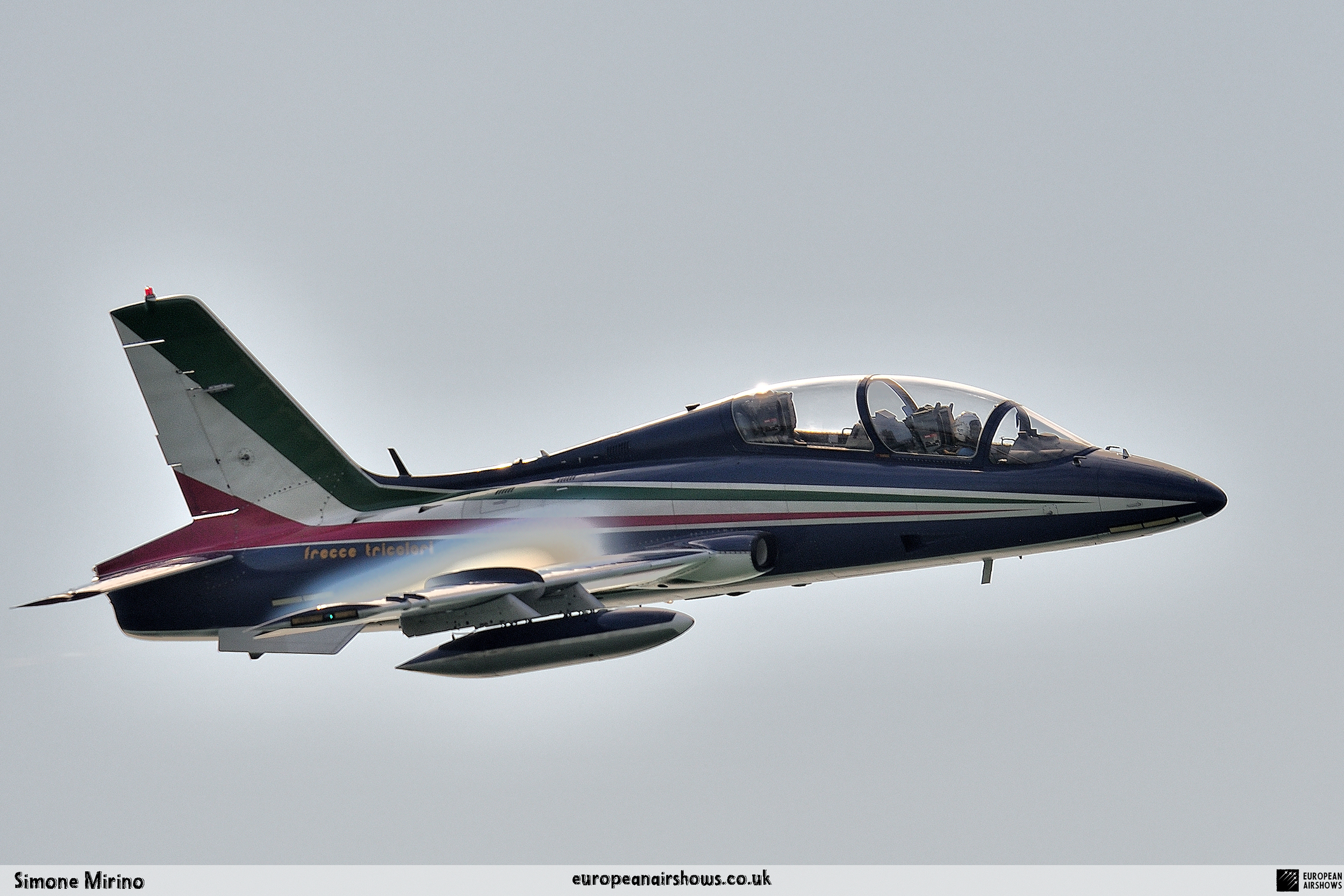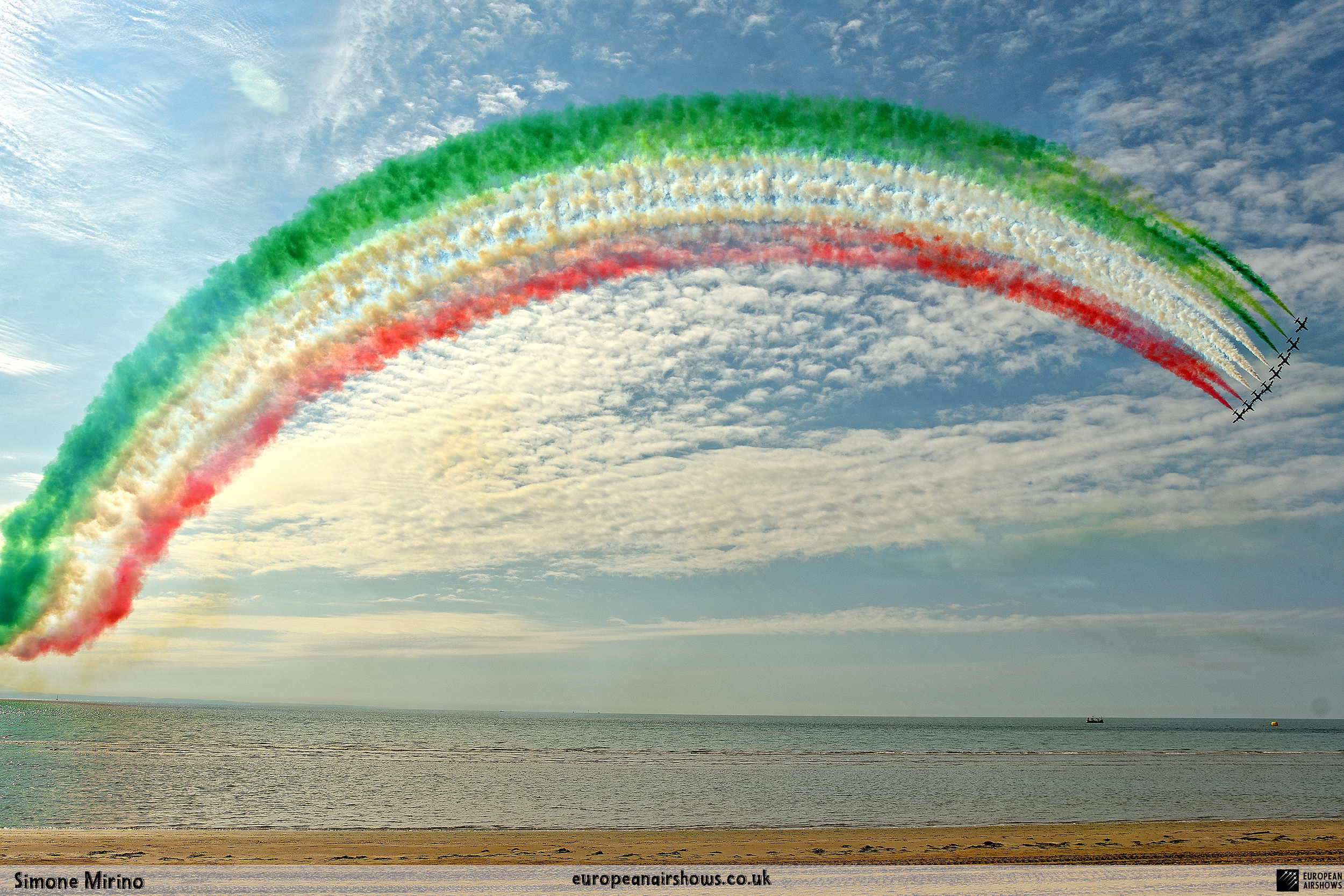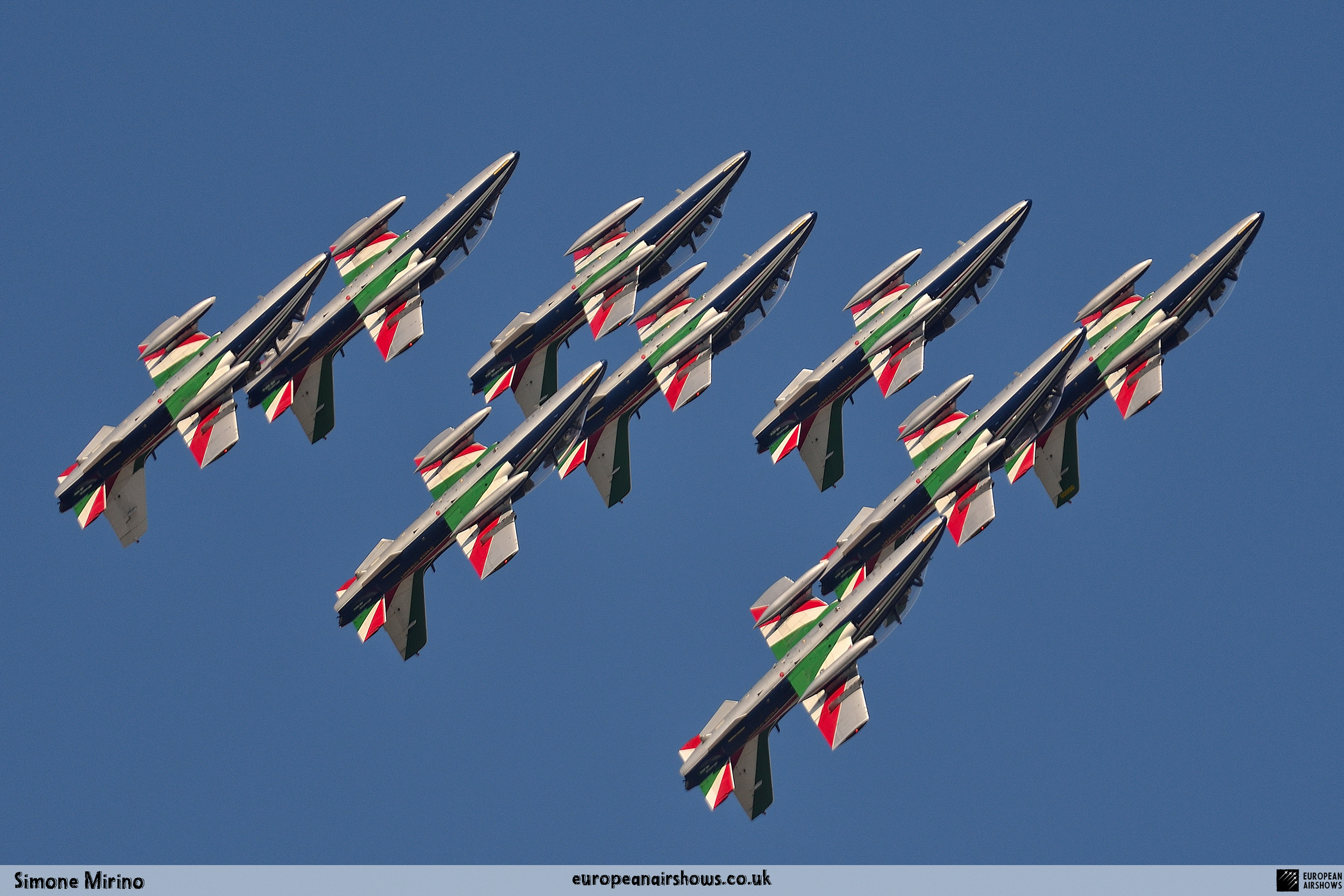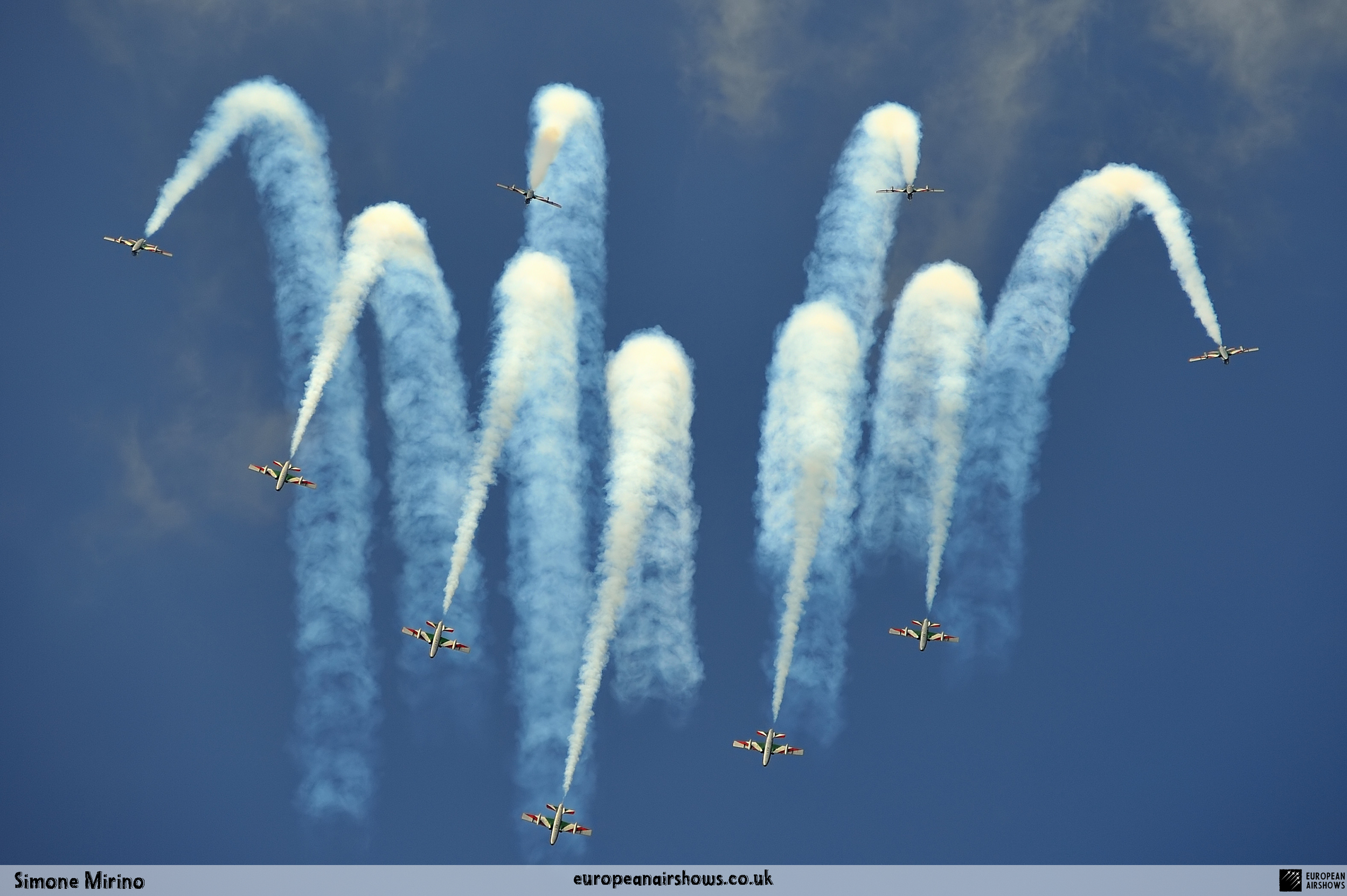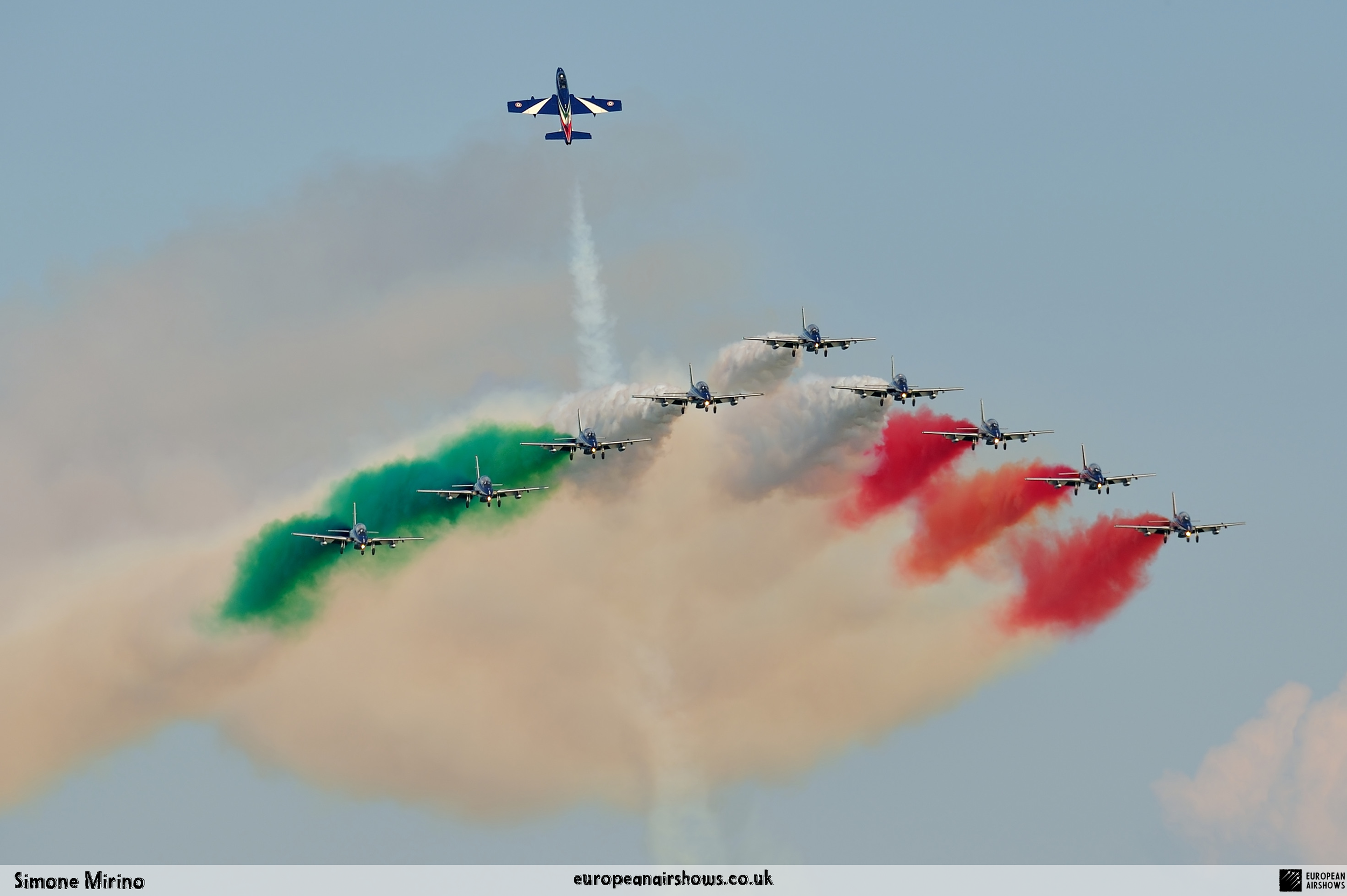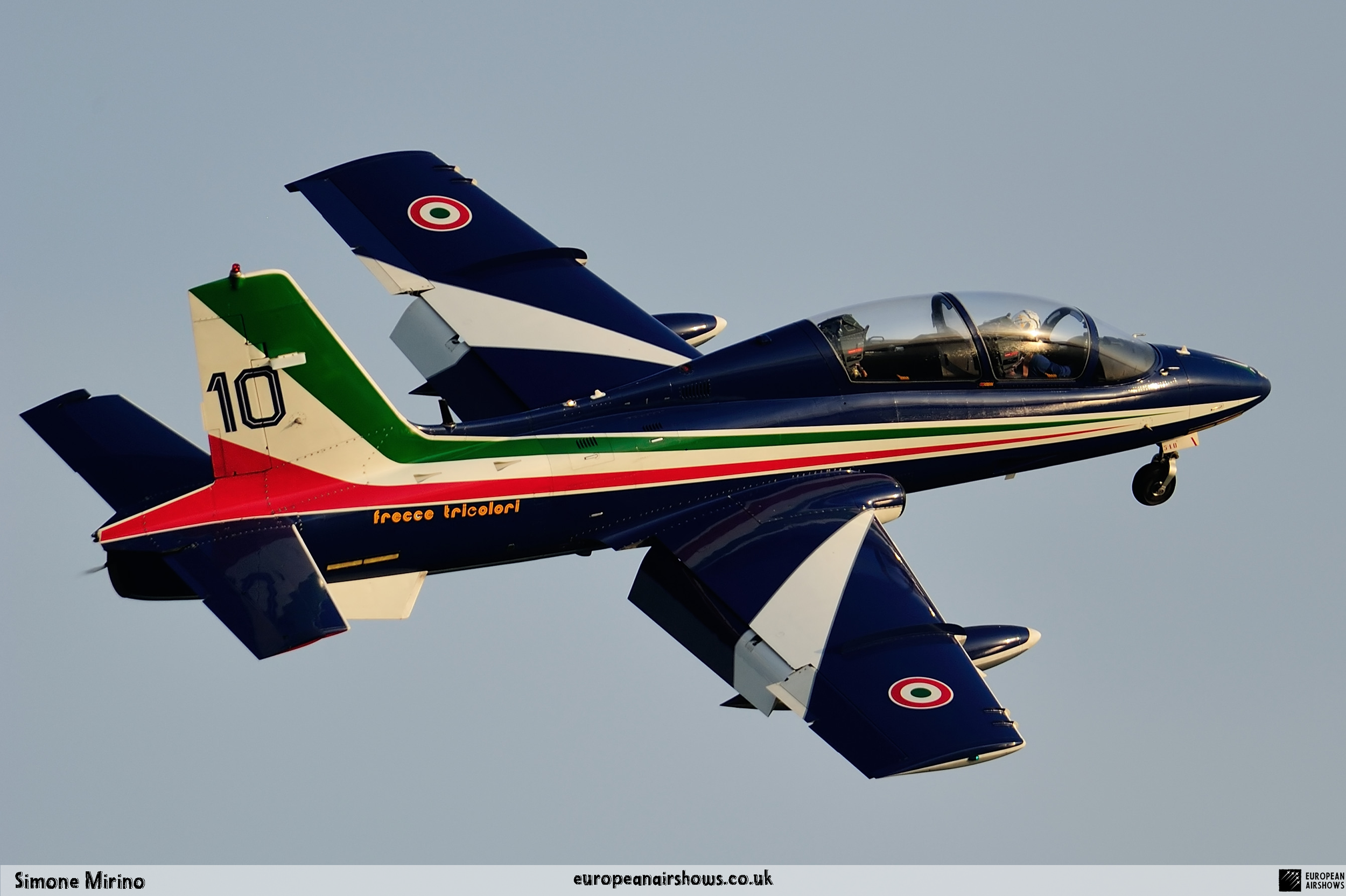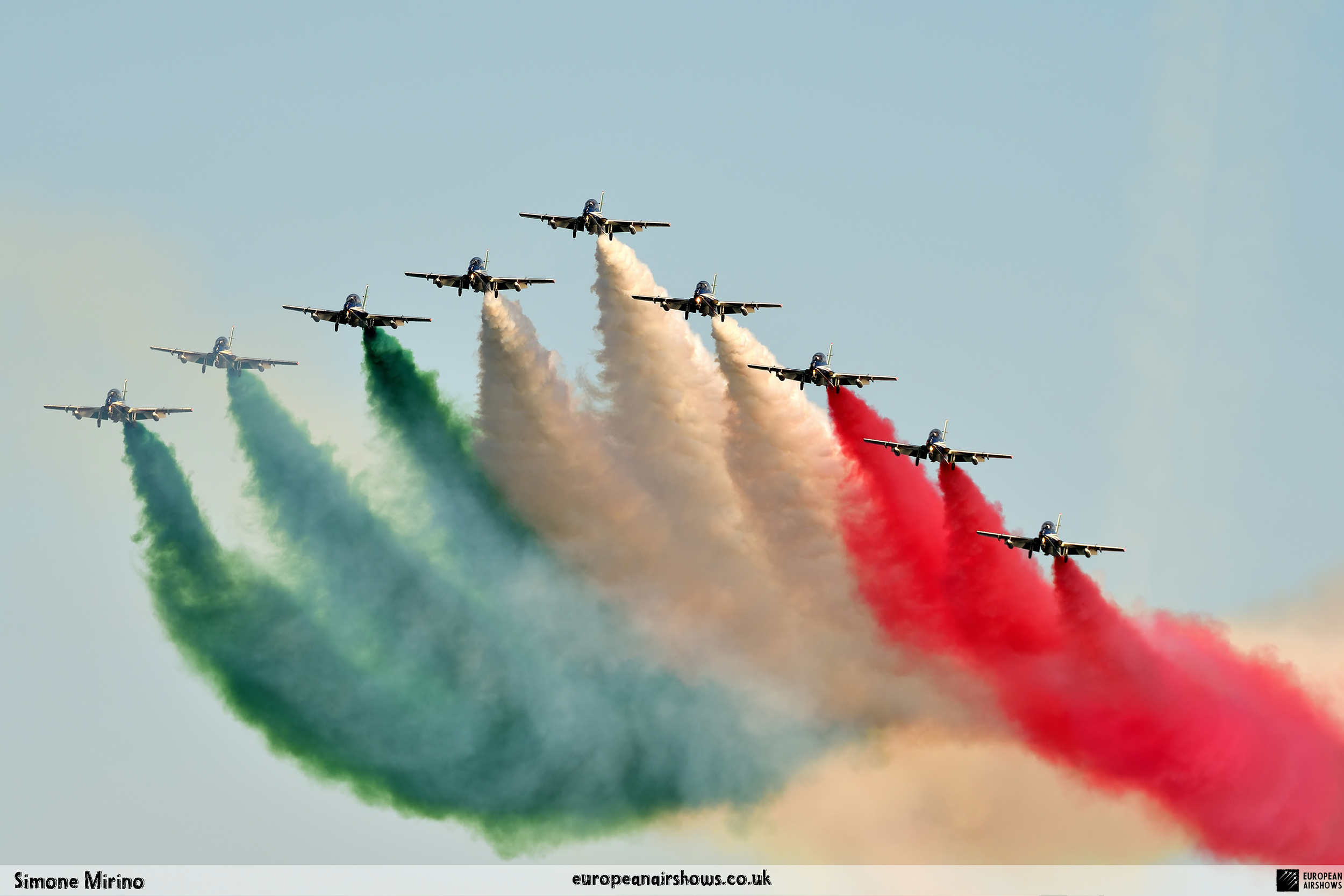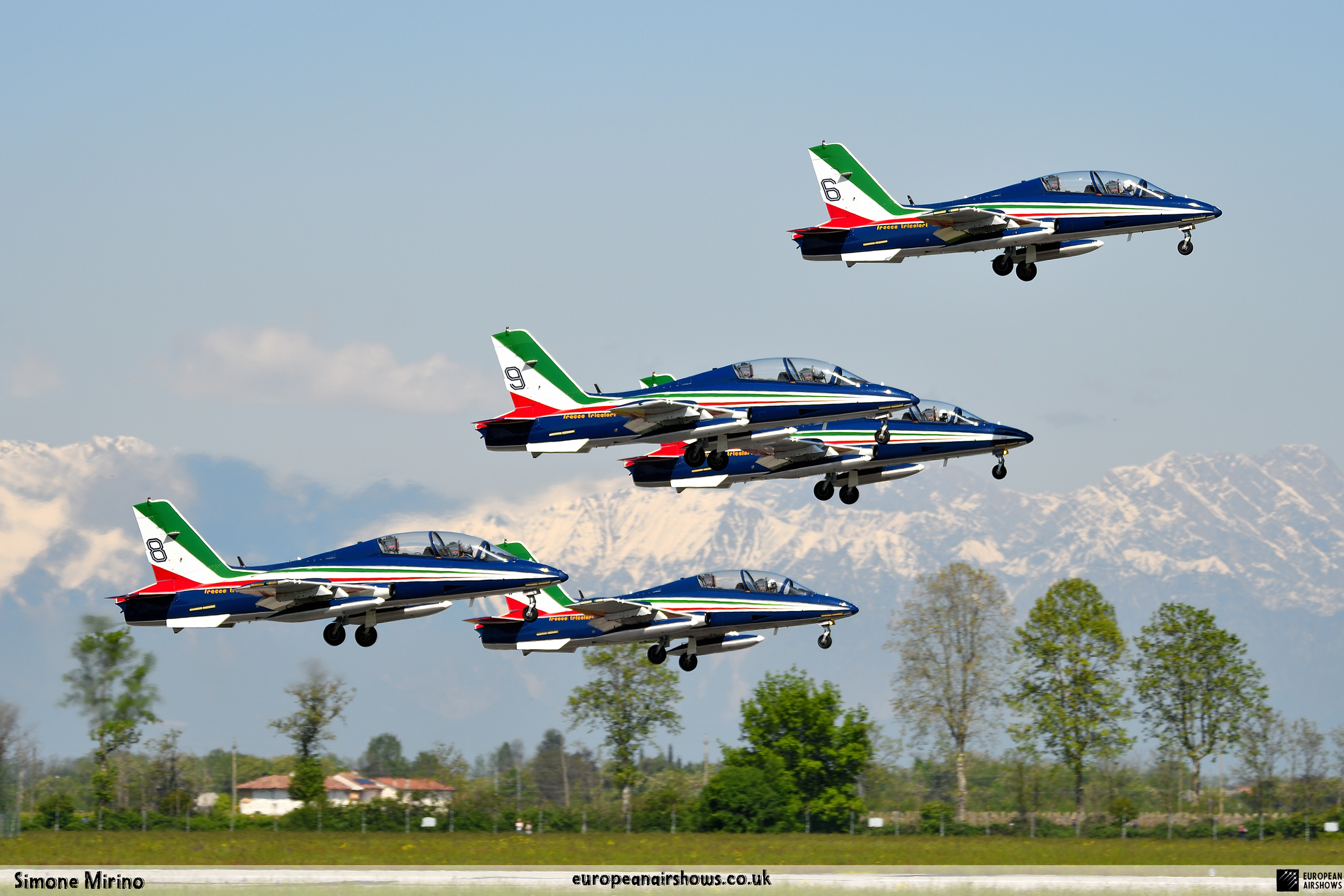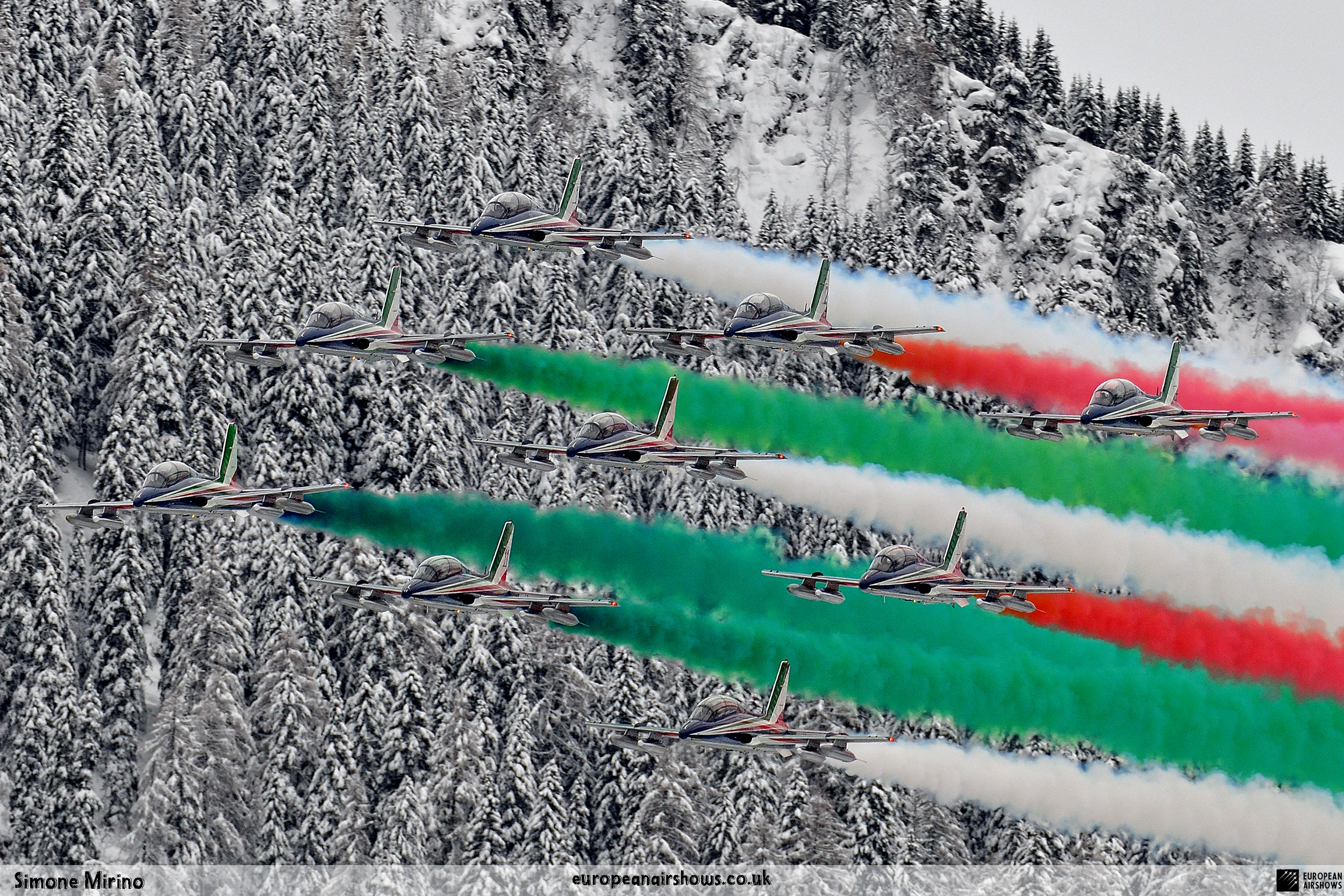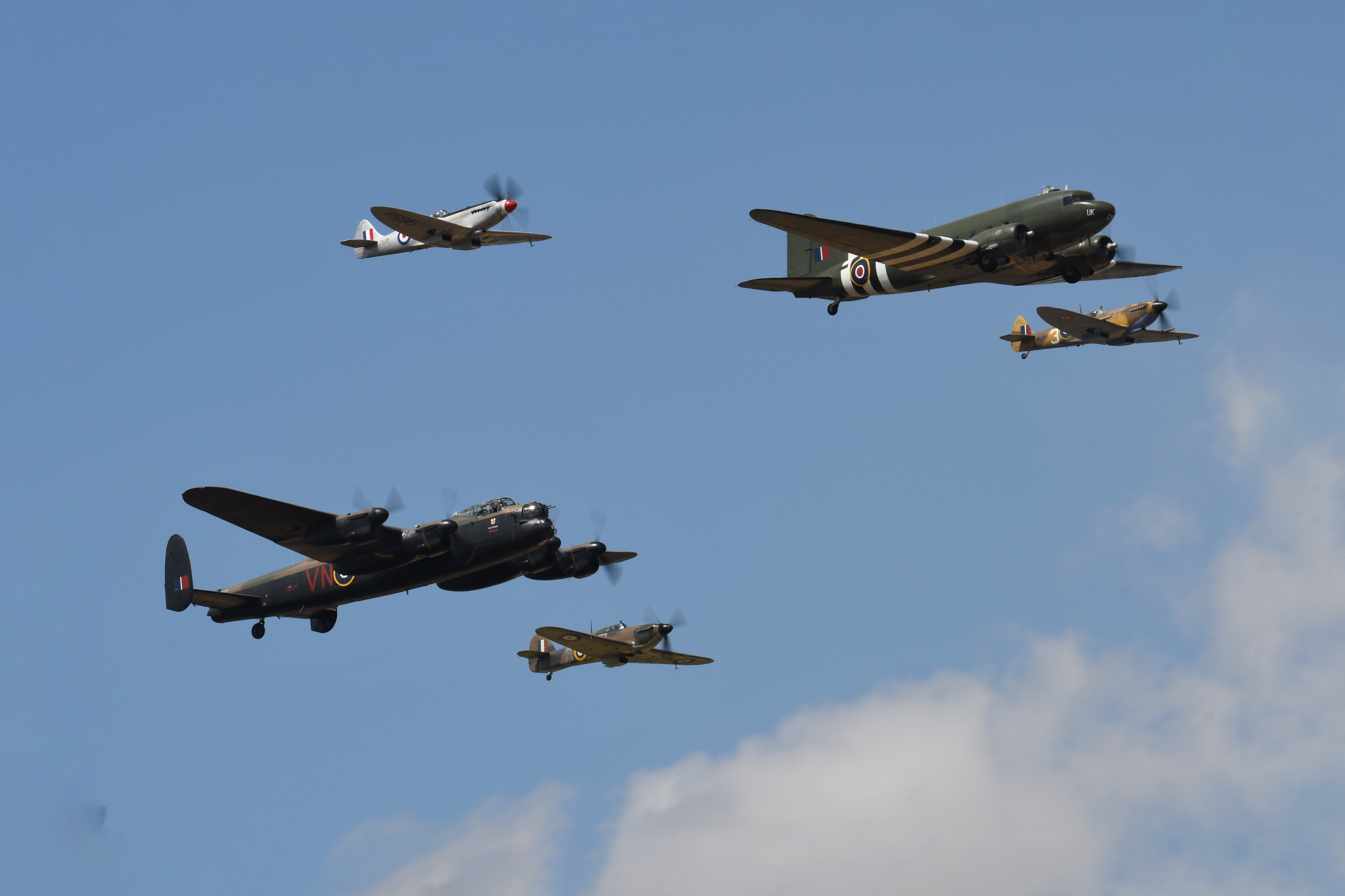Frecce Tricolori
Country
Italy
Size
10 Aircraft
Base
Rivolto Air Base
The Frecce Tricolori (Italian “Tricolour Arrows"), officially known as the 313° Gruppo Addestramento Acrobatico, Pattuglia Acrobatica Nazionale (PAN) Frecce Tricolori, is the aerobatic demonstration team of the Italian Air Force. Based at Rivolto Air Base, province of Udine, it was created on 1st of March 1961 as a permanent group for the training of Air Force pilots in aerobatics.
The team consists of 13 Aermacchi MB-339-A/PAN, a two-seat fighter-trainer aircraft, only 10 of which actually take part in displays. The remaining three are spare aircraft. With ten aircraft, nine in close formation and a soloist, they are the world's largest aerobatic team. All team members carry the call-signs “Pony”, followed by the number of the team aircraft. “Pony #0” is flown by the commanding officer of the squadron. The commanding officer must be a former team member but he doesn’t fly in the actual demonstrations. The formation team leader flies Pony #1 and he must also have flown with the team previously. The team’s solo pilot flies in the #10 position. All candidate pilots for the Frecce Tricolori must have accumulated a minimum of 750 flying hours on jet aircraft
The 313th Aerobatic Training Group was founded on the 1st of March 1961 at the Rivolto Air Base. On the same day, six North American F-86 Sabers of the 4th Air Brigade took off from Grosseto to Rivolto. Pattuglia Acrobatica Nazionale performed their first official display On the 1st of May 1961 at the Trento airport with five F86 Saber aircraft. Unfortunately, just three days later, on May 3rd, one of the planes crashed killing the pilot.
The Frecce Tricolori flew on North American F-86 Sabers until 1963. The staff, initially not as numerous as today, was enlarged in 1963 to nine aircraft plus the soloist, adding the possibility of using coloured smoke. The following year the Fiat G.91PAN fighter-bombers arrived and in 1982 the team moved to their current aircraft the Aermacchi MB-339 A/PAN MLU.
On the 28th of August 1988, the Frecce Tricoli was struck by a tragedy now remembered as the Ramstein disaster, in which three pilots and 67 spectators lost their lives. Two of the three dead pilots, Mario Naldini and Ivo Nutarelli, were supposed to testify at the trial for the Itavia Flight 870 a few days later. This was the cause of various suspicions about the actual nature of an "accident" of what happened.
In 2000 the team reached 50,000 flying hours on the Aermacchi MB-339 and in 2005 won the award for best display at the Royal International Air Tattoo at RAF Fairford, England. They were also the first non-Russian unit to receive the Russian Silver Medal for Aeronautical Merit.
| Back to Top |
Signature Formations
Diamond + 1
Triangle
Triangolone
| Back to Top |
Aermacchi MB-339PAN
The Aermacchi MB-339 is a military jet trainer and light attack aircraft designed and manufactured by Italian aviation company Aermacchi. The MB-339 was developed during the 1970s in response to an Italian Air Force requirement that sought a replacement for the service's existing fleet of Aermacchi MB-326. Its design was derived from that of the MB-326, rather than a new design, and thus the two aircraft share considerable similarities in terms of their design. Aermacchi had found that the MB-339 was capable of satisfying all of the specified requirements while being the most affordable option available. The maiden flight of the MB-339 took place on the 12th of August 1976; the first production aircraft was delivered two years later.
Roughly half of all MB-339s entered service with the Italian Air Force, while the remainder has been sold to various export customers. As well as being used for training, the type is also flown by the Frecce Tricolori aerobatic demonstration team. The type has been used in combat by both the Eritrean Air Force during the Eritrean–Ethiopian War of 1998-2000 and the Argentine Naval Aviation during the Falklands War of 1982. In both conflicts, the MB-339 was typically flown as an attack aircraft. In Italian service, the aircraft is intended to be replaced by the newer Aermacchi M-345.
The Aermacchi MB-339 is a military jet trainer and light attack aircraft, featuring a conventional configuration, tricycle undercarriage and all-metal construction. It has many similarities with the design of the MB-326, sharing the majority of its airframe with the older aircraft. According to aviation periodical Air International, the most significant revision of the MB.339 was a redesigned forward fuselage, which raised the instructor's seat to allow visibility over and past the student pilot's head. In typical operations, the aircraft is flown by a crew of two, who are seated in a tandem configuration; during training missions, the student is seated in the forward position while the observing instructor is placed directly behind and somewhat above them. The cockpit is pressurised and is covered by a jettisonable canopy which works in conjunction with the twin Martin-Baker-built ejection seats.
The MB-339 possesses a low, un-swept wing complete with tip tanks; the air intakes for the single turbojet engine is located within the wing roots. This wing is identical to that used on the older MB-326K model. The powerplant used for the aircraft's initial versions was the Rolls-Royce Viper 632-43 turbojet engine, which was capable of producing a maximum thrust of 4,000 lbf (17.8 kN); this is the same model as installed upon the older MB-326K model. Later models, such as the MB.339C, are furnished with the more powerful Viper 680 engine, which can generate up to 4,300 lbf (19.57 kN) of thrust. For improved aerodynamics, the MB-339 features an enlarged tailfin over its predecessor.
While some models of the MB-339 are primarily intended for training operations, others are instead principally equipped to perform light fighter and fighter-bomber roles. Combat-orientated aircraft are typically outfitted with more advanced avionics, such as improved inertial guidance systems, digital nav/attack computers, a MIL-STD-1553B databus, and hands-on throttle-and-stick (HOTAS)-compatible flight controls. Furthermore, various defensive systems, such as a radio jammer, radar warning receiver (RWR), electronic countermeasures (ECM), along with larger wingtip tanks, would typically be adopted. The MB.339K carries a pair of 30mm DEFA cannon while a total of six underwing hardpoints can accommodate up to 1,815 kilograms of external stores. It has been qualified to be armed with various munitions, such as the Sidewinder and R.550 Magic air-to-air missiles, the AGM-65 Maverick air-to-surface missile, various laser-guided bombs and rockets, as well as the Marte Mk.2 anti-ship missile.
| Back to Top |
